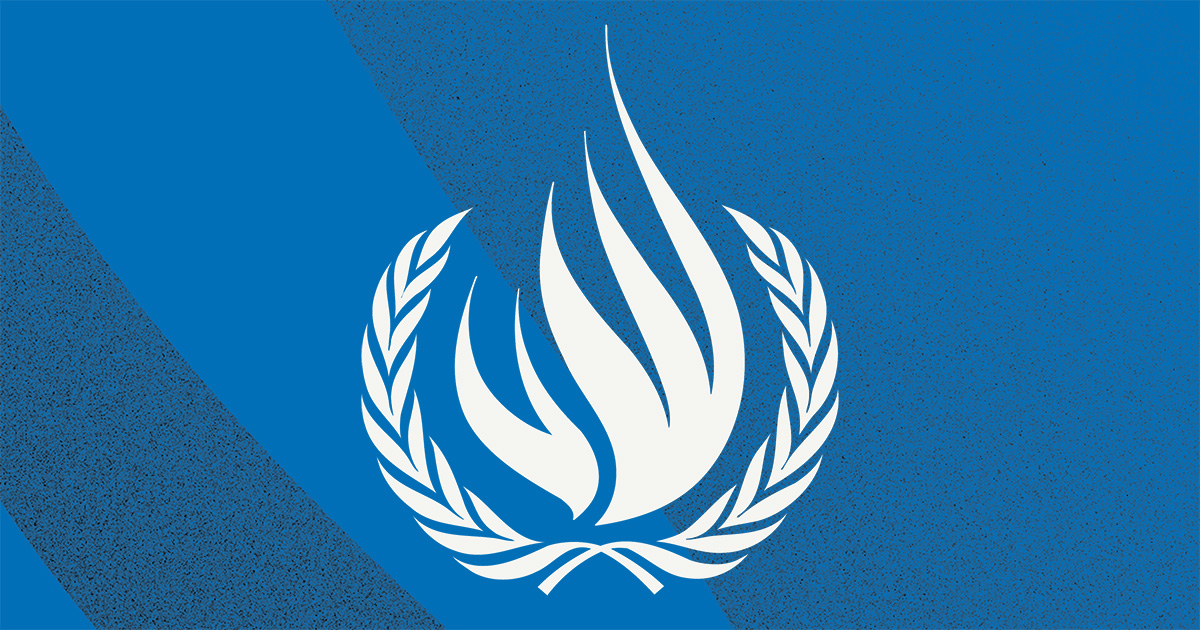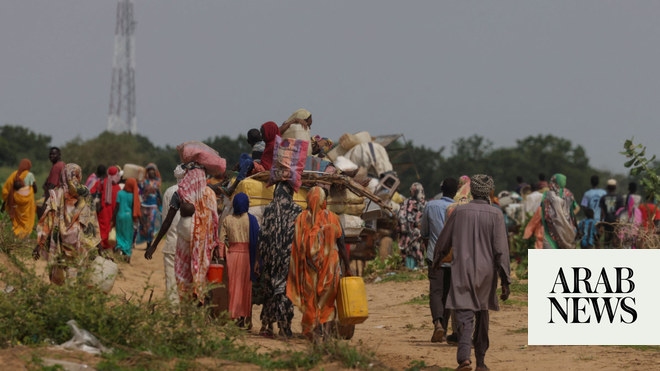
They walked in solemn silence, slowly making their way past the camp’s gate, the barbed wire and the prisoners’ barracks, retracing the same paths many of their families followed before meeting their death 80 years ago.
On 2-3 August 1944, more than 3,000 Roma people — including women, children and old people — were murdered in Auschwitz-Birkenau, the largest Nazi concentration and death camp. For a group of Romani human rights activists and a few Roma survivors who are still alive, a recent visit to the site was a vivid reminder of the crimes committed against this community throughout its history.
But the occasion was also seen as an opportunity to inspire new generations to advance the rights of Roma and end hate and discrimination.
“These camps are monuments of sorrow, but also of hope. Each camp I have visited brought the promise of a more compassionate future," said Michel Kriston, a Roma rights activist and a descendant of camp survivors, during a remembrance ceremony on 2 August to mark the 80th anniversary of the Holocaust.
"The concentration camps, now silent, speak volumes through the echo of those who were lost; their voices, though silenced, will never be forgotten,” he said.
During the Holocaust, hundreds of thousands of Roma and Sinti people were murdered by the Nazis and their collaborators. In some countries, up to 90 % of Romani communities that existed before World War II did not survive the Holocaust. Many were imprisoned, used as forced labour or subject to forced sterilisation and medical experimentation.
As part of the remembrance, UN Human Rights and partners organized a visit by Romani human rights defenders from the Americas to take part in awareness-raising activities in Europe, with the aim of promoting public memory of Roma people and history, strengthening Roma rights, and combatting antigypsyism, the specific form of racism facing Roma.
The week-long mission included visits to the Auschwitz-Birkenau concentration camp museum and memorial site, in Poland, and to two other former concentration camps in Czechia designated for Roma, where entire families were deported from Romani ghettos in cities across Europe and forced to wear uniforms bearing a "Z" for "Zigeuner" (Gypsy). At the sites, the Romani activists, many of whom are descendants of camp survivors, laid flowers and held silent vigils.
“
This mission has strengthened my resolve to advocate for human rights and never forget the atrocities of the past.
“
NATHAN MICK, ROMA HUMAN RIGHTS ACTIVIST
The Americas delegation was joined by a group of 400 Roma activists organized by the NGOs Ternype and Dikh he na Bister (“Look and Don’t Forget” in Romani), which promote dialogue among young Roma about the Holocaust and its memory.
For many European Roma present, it was the first time they heard there were Romani communities in the Americas. Although Roma have a history of hundreds of years in the Americas, many arrived in the 1930s, 40s and 50s, fleeing Nazi persecution and its aftermath. Participants said they were pleasantly surprised by the similarities between their families, and happy because they could communicate in the Romani language.
“This mission was a critical step in awareness-raising within the United Nations around the urgent work needed to address the human rights of Romani populations not only in Europe but also across the Americas,” said Dafina Savic, founder of the Canada-based Ternyipe.
At the Auschwitz-Birkenau site, the group visited the area that was designated for Roma families. A modest museum tells the history of the Roma people, the persecution, and the imprisoned families. Its archives contain two “Record Books of the Gypsies” drawn up by camp officials — one covering men and boys, the other women and girls. During their visit, the Roma rights defenders took time to carefully search for the names of family members.
Claude Cahn, a human rights officer at UN Human Rights who worked on the project to bring the Americas mission to Europe, said the Roma Holocaust anniversary presents many opportunities to raise awareness about the Roma, as well as to advance Roma rights and Roma inclusion worldwide.
“Memorialization plays an important role towards the promotion of truth, justice, reparation and guarantees of non-recurrence, and it provides opportunities to discuss and challenge present-day anti-Romani racism and exclusion,” Cahn said.
Romani Memory Map
UN Human Rights has been working with civil society organisations, governments, and other partners to tackle antigypsyism and to encourage public memorialisation policies, including the Romani Memory Map for the Americas, a crowd-sourced project to highlight both the positive contributions, as well as the atrocities of the past.
Roma and related communities worldwide have long suffered from deep-rooted racism, marginalization and violence, from the Holocaust to ethnic cleansing to slavery to the systematic taking of children into state care. Violations of the human rights of Roma are reported in practically all areas of life: education, health, housing, work, access to services and in other spheres of life.
The mission included visits to Romani community development projects and museums and institutions of Romani culture, where they learned about progress in developing memorialization sites to commemorate the Roma Holocaust. The group also met with government officials and Roma civil society groups, and went walkabout in a Romani neighbourhood in the city of Brno. The Americas delegation presented the Romani Memory Map.
Aline Miklos, a UN consultant who participated in the visit, said telling the truth of what happened in the past is a way of fighting discrimination and injustice. She said the mission was also aimed at putting a spotlight on present violations.
“The economic, social, and political situation of Roma people has not changed much since the end of World War II,” Miklos said. “They are still deprived of basic rights and, as we observed, suffer a high degree of discrimination and racism in Europe and in the Americas also."
For Kriston, remembering the horrors of the past is an incentive to remain vigilant today.
“Visiting the concentration camps was like confronting the darkest face of humanity and reigniting the flame of vigilance against hatred," he said.
The mission was supported by the Ministry of Racial Equality of the Brazilian government.












